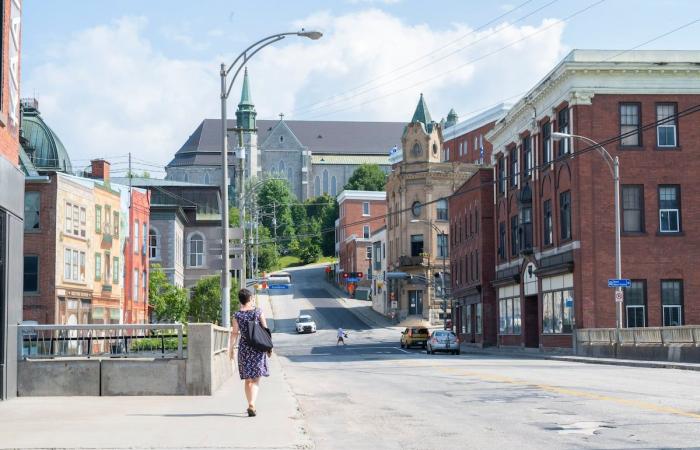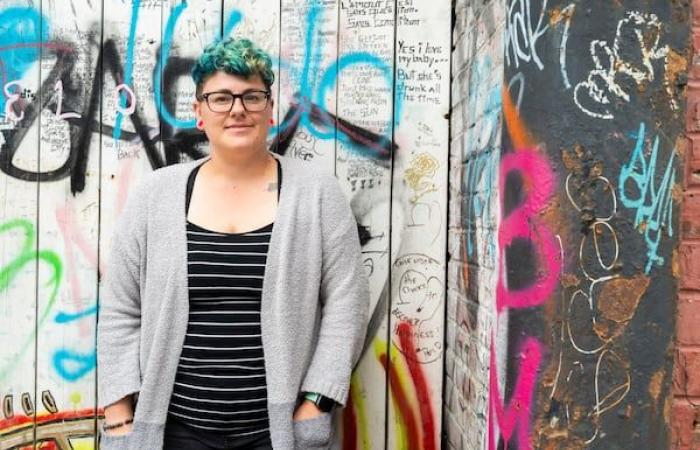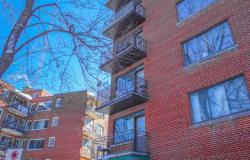This question asked by an Internet user on a Reddit page dedicated to the city of Sherbrooke, a few months ago, generated negative comments on the city center.
«Check a map. Draw a square on Bowen and Alexandre streets, between Galt and King. That’s not bad, spots that you want to avoid,” writes an Internet user, among the thirty comments. “Personally, as a woman, I would avoid Bowen Street, Alexander and Wellington. I wouldn’t walk there alone at night,” added a second.
Anchored in the collective imagination, this feeling of insecurity gives the city center an unflattering reputation. A Léger survey commissioned by the City of Sherbrooke unveiled Tuesday suggested that 91% of respondents feel safe in Sherbrooke… except in the city center, where only 67% of respondents expressed a perception of security. Deserved or not this reputation? The Tribune covers the issue.
“I can’t count the times I’ve had to call the police.”
For three years, Mélanie, who prefers to withhold her last name, lived on Bowen Street South, near the intersection with King Street East. “Looking back, it’s crazy how I realize that I was putting up with things that didn’t make sense,” expresses the 40-year-old seamstress.
“If I go to see a show at the Granada Theater, I’m afraid to walk back. The small park at the corner of Bowen South and King East streets, you don’t go by there when night falls,” she insists, adding that she has already been followed at late hours near this place.
Mélanie says she also saw people using substances in the street on several occasions, which shook her. For her, this cohabitation with a more marginalized population was difficult. “I have often, often called the police [pour des gens en crise]“, she recalls.
Mélanie lived downtown for three years, in the Bowen Street South area. (Maxime Picard/La Tribune)
According to her, thefts and vandalism also happened frequently in her neighborhood. “My neighbor even had his tank smashed,” she remembers.
It was not uncommon for Mélanie to come across people she described as “very aggressive” in the street. “We try to stay away. We let them live. They all have a story, these people. I don’t want them to move. I just want to feel safe,” she says.
Allyson also wishes to only give her first name. She has lived in downtown Sherbrooke for several years. Although her apartment was less than a mile from Mélanie’s former home, her experience was different.
For the 25-year-old student, downtown Sherbrooke has a community spirit that can be compared to that of a village. “When I leave my house, I can cross King Street West and see my friends greeting me in the window of the Louis restaurant. And when I go to Wellington Street, I always meet at least two people [que je connais]», rejoices Allyson.
Allyson and her cat André have made their home in the west side of downtown.
(Maxime Picard/La Tribune)
Although her experience was positive overall, Allyson quickly developed discomfort when she crossed King Street to get closer to Alexandre Street. She also finds herself being more on the lookout when she has to move to the other side of the Saint-François River, towards Bowen Street.
Allyson even confides that she selected her apartment based on its location, in order to avoid certain streets, such as Rue Gillepsie. “I saw myself getting off the bus late in the evening and having to walk in the dark. I was not game…” she remembers, specifying that she was never really in danger.
What do the statistics say?
Are there more crimes in the city center? What portrait can we draw from the public security statistics available on the City of Sherbrooke website?
Between July 1, 2021 and June 30, 2024, the City of Sherbrooke recorded 12,421 crimes, distributed in 14 districts. We selected five crimes, which we grouped under three categories: theft and break-ins, assault and threats and mischief. The three districts that most affect the city center, namely Pin-Solitaire, Hôtel-Dieu and Lac-des-Nations, present high statistics, the Hôtel-Dieu district being the scene of fewer crimes than the two others.
The Lac-des-Nations district ranks at the top of the three rankings, thus bringing together nearly a fifth of all misdeeds, threats and assaults, as well as thefts and break-ins committed in the territory of Sherbrooke.
The figures are also particularly high for Pin-Solitaire and Ascot, which saw respectively 11.7% and 14.3% of assaults and threats committed in Sherbrooke in the last three years.
Nearly 13.5% of Sherbrooke’s misdeeds were perpetrated in the Pin-Solitaire district, while Ascot represents almost 11% of these.
The Hôtel-Dieu district is never far from the top of the list, which accounts for 9% of thefts and break-ins, 11.9% of threats and assaults, and 7.9% of misdeeds.
Particularly, in terms of thefts and break-ins, second position goes to the Carrefour district, which is home to a large part of the city’s busiest businesses.
A reputation that does not date from yesterday
Historian Harold Bérubé explains that downtown Sherbrooke has always historically been perceived as having a bad reputation. So much so that from the end of the 19th century, wealthier elites began to move away from the city center. “They will want to get together, so they will head towards the Old North. It’s like the elite’s neighborhood. The workers do not have this luxury; they must be close to work,” says the historian.

Downtown Sherbrooke has not always enjoyed a good reputation. (Maxime Picard/Archives La Tribune)
Later, in the 1960s and 1970s, the city center was deserted with the advent of shopping centers. The businesses on Wellington Street are gradually being replaced by bars and other entertainment-oriented establishments. “The city center looks old-fashioned, outdated, crumbling. It’s very difficult to unravel that once it takes hold in people’s minds,” said Harold Bérubé.
Today, the commonly used term is instead “dangerous.”
A fear of the unknown
Catherine Blais, social work technician and coordinator at Ma Cabane, a day center and place of respite for people who are isolated or at risk of homelessness, says that it is not uncommon for people to stare at the workers or the users who are standing at the entrance to the day center, at the corner of Bowen and King. “It’s like it’s a freak show“, she laments.
She explains that this street corner attracts marginalized populations since it is close to certain important resources, including Ma Cabane, La Chaudronnée and Partage St-François. Ma Cabane welcomes nearly a hundred people per day.

Catherine Blais works as a coordinator at the Ma Cabane day center. (Maxime Picard/Archives, La Tribune)
Asked about the security issues felt by citizens in the city center, Catherine Blais affirms that it is first important to differentiate between feeling disturbed and really feeling in danger. “Of course, if you see someone you don’t know, who is in a bit of trouble, talking to themselves very loudly, I understand. [que ça peut être dérangeant]. But in general, if you stop a little, it’s easy to see [qu’il n’est pas dangereux]really just in her bubble,” she explains.
According to the coordinator, there is no miracle solution to facilitate cohabitation. “We live in a society that is hyper-intolerant of ourselves and others. It is an ideal to try to achieve social diversity without going through basic living together,” she believes.

Sébastien Ouimette, head of EMIP. (Maxime Picard/Archives La Tribune)
The mobile psychosocial intervention team (EMIP) of the Sherbrooke Police Service (SPS) also works closely with marginalized populations in the city center. “We make sure that they have no immediate needs, either for their mental health or their safety,” explains Sébastien Ouimette, the head of EMIP, who adds that tours are regularly made to maintain contact.
The EMIP can receive calls concerning a person who is wandering without committing an offense, but whose presence causes concern among a citizen. “We explain to them that their presence is not necessarily dangerous. Often, people end up understanding that it is not automatically a person who should be brought to justice,” he explains.
Sébastien Ouimette specifies that it may happen that certain interventions end in court, but that they remain occasional. According to him, the increase in homelessness in Estrie is a phenomenon with which the population must still learn to deal.










